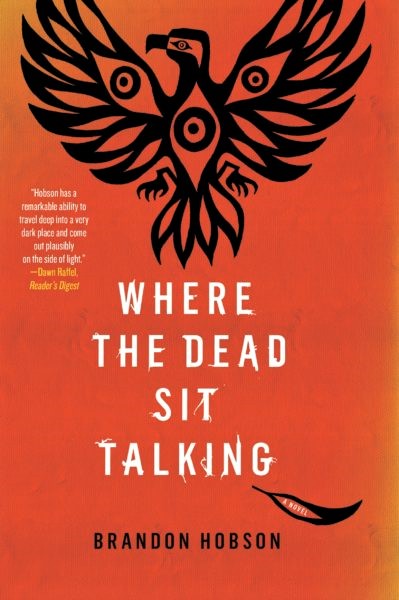
With each new novel, Brandon Hobson has created a complete universe, with a distinct tone and voice. His latest novel, Where the Dead Sit Talking, tells the story of Sequoyah, a troubled Cherokee teenager who winds up living with a foster family after his mother is jailed. It’s a quietly devastating book, full of character struggling to understand their own troubles and connect with those around them. It also marks a significant shift from the surreal urban spaces of Desolation of Avenues Untold and the very different familial drama on display in Deep Ellum. I talked with Hobson about the origins of this book, its use of storytelling as a motif, and more.
Where the Dead Sit Talking is a very different novel than Desolation of Avenues Untold, which in turn is very different than Deep Ellum. How long does it take you to find the particular mode that best suits the story you’re telling?
I really just work on what I find exciting in terms of voice and story and point-of-view and go from there. It takes a while to find that. But I do want to write different types of books and certainly don’t want to be labeled to one particular style.
What prompted your decision to set this novel in the late 1980s?
I grew up in the 70s and 80s, and that period of the late 1980s is one I find particularly memorable and one where I was discovering new music, for example, so listing band names and making music and movie references was fun; at one point George mentions the film Rain Man, which was filmed in part in Oklahoma in the late 80s, so his comment “Tom Cruise sucks” is a reference to Hoffman’s “K-Mart sucks” in Rain Man.
At several points within the narrative, Sequoyah reveals details of the fates of some of the people he knew at that point in his life. How much of his own future life did you have charted out?
At the start I had an image of a man at a gravesite, looking back at a period in his life. We’re not sure how dangerous he is. Parts of this is purposefully ambiguous, because I tend to like ambiguity though I know many people don’t like it.
In the span of four years, you’ve had three novels come out. Were you working on them in relatively close proximity?
Much of Deep Ellum had been written some years before it came out, but Desolation… and Where the Dead… were written in relatively close proximity of a few years I think.
At one point, Agnes tells Sequoyah that he might be “easily manipulated.” What were the challenges of writing a novel with a character with this quality at its center?
In early parts of the book we see the way adults treat him, the way the justice center treats him, and even in the way Rosemary treats him at times. I feel sorry for him at times, but other times not so much.
Throughout the novel, excerpts from George’s work in progress surface – and eventually, there’s a glimpse of Sequoyah learning to tell stories as well. In fact, nearly every character has a story to tell, from the death of Harold’s father to the unsettling yarn of a predatory falcon. How did this theme of storytelling develop as you worked on the novel?
I’m so happy you noticed this. The theme of storytelling is important to this book as a Native American novel for me, but also in the fact that everything important in his life has to do with stories (even, as you say, with the “predatory” hawk). I’m happy you mentioned the hawk. The hawk is important.
Follow Vol. 1 Brooklyn on Twitter, Facebook, and sign up for our mailing list.
